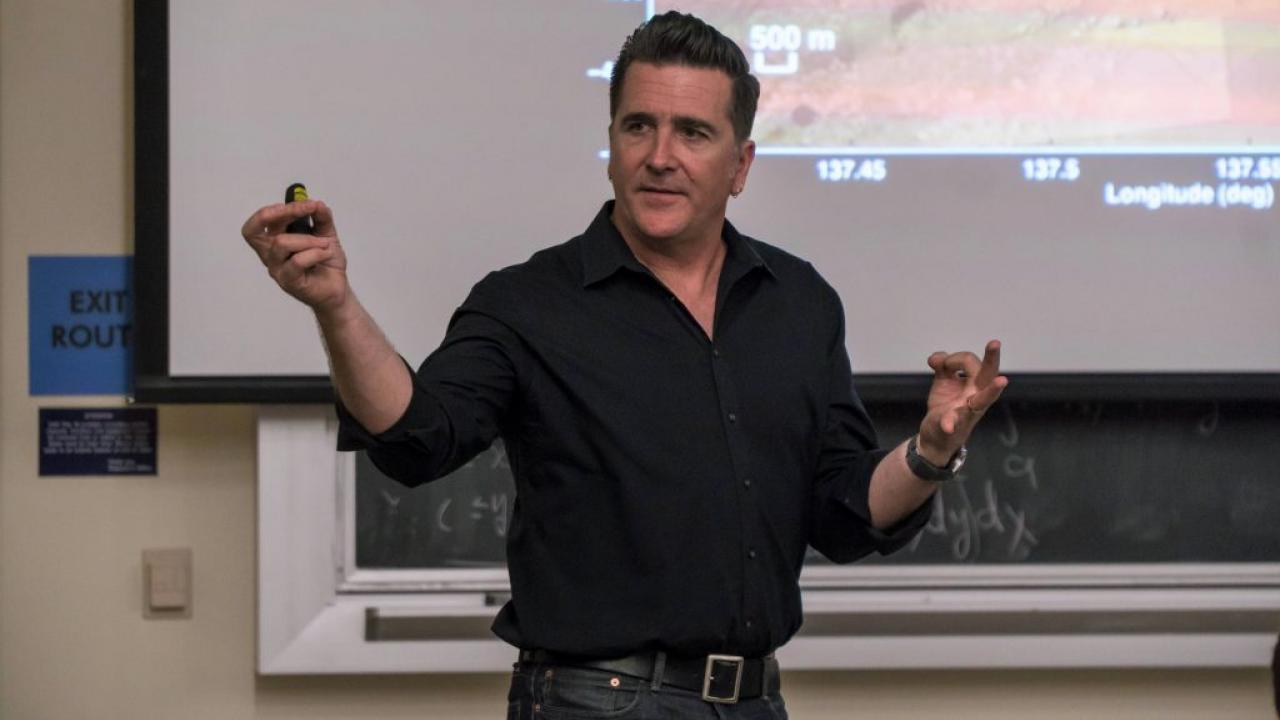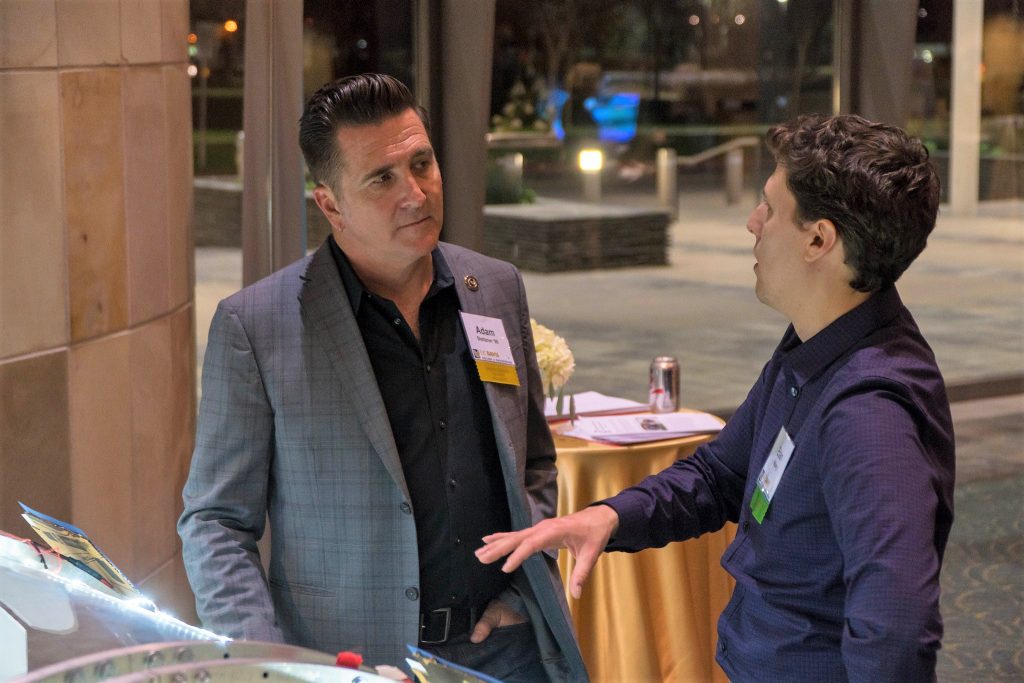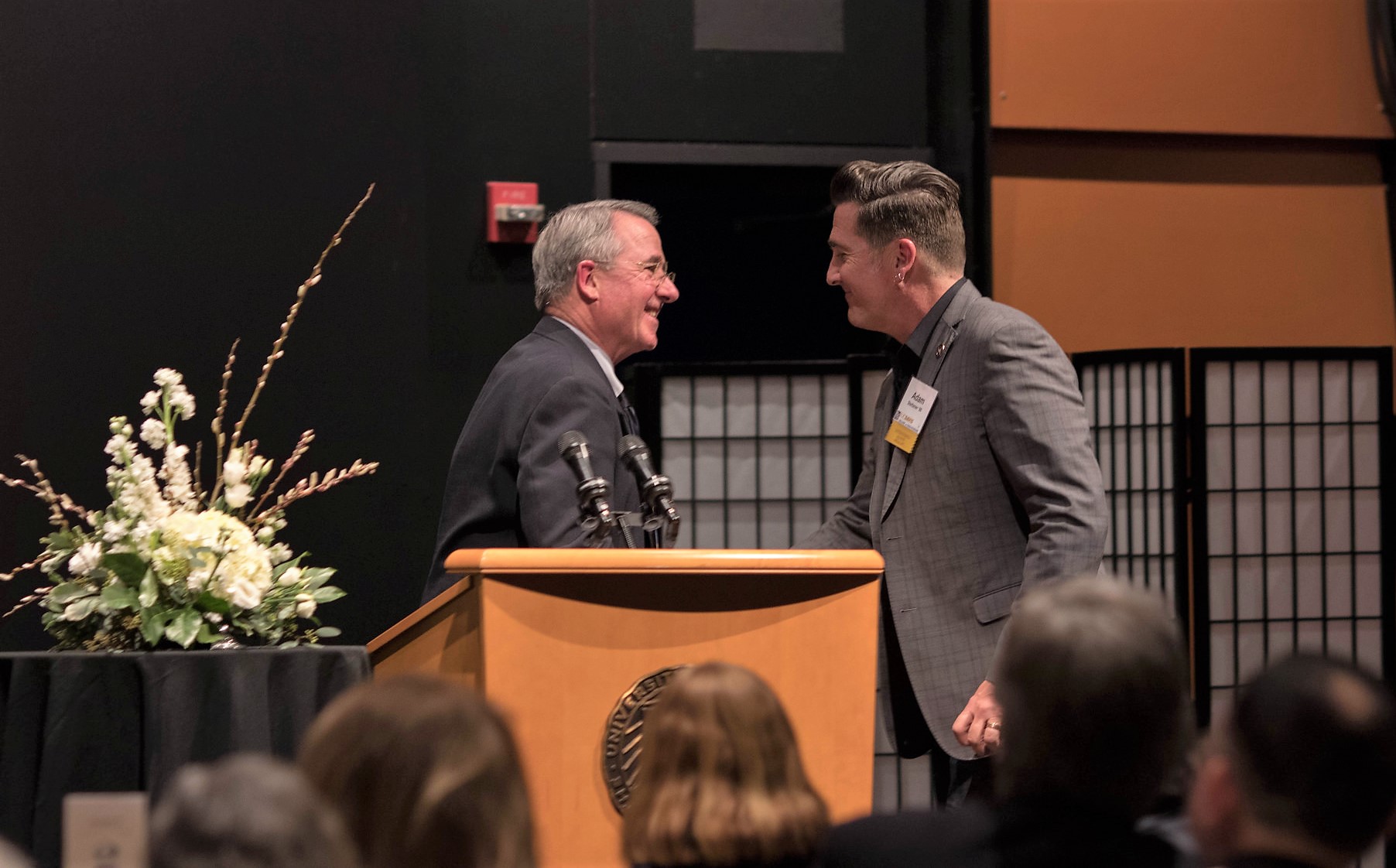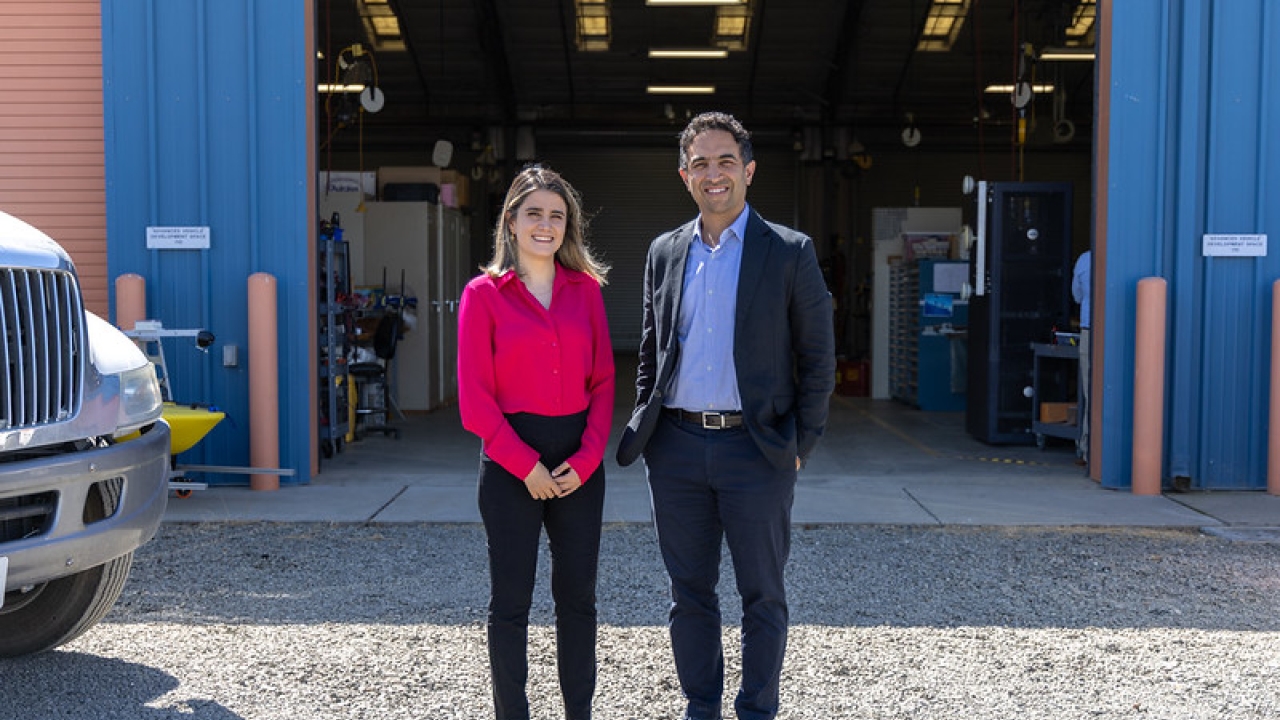
NASA Engineer and UC Davis Alum Shares “Curiosity” With Students
by Bonnie Dickson
Last month, UC Davis alumnus Adam Steltzner, now a chief engineer for NASA Jet Propulsion Laboratory’s Mars 2020 Project, returned to Davis to tell students about his role in the 2012 landing of the Mars Curiosity rover and to share his insights on the power of human curiosity.
More than 130 people turned out for Steltzner’s Jan. 19 lecture, “The Right Kind of Crazy: Risk, Reason and Engineering Curiosity to the Surface of Mars.”
During his talk, Steltzner explained the challenges of engineering Curiosity’s Entry, Descent and Landing System. Part of NASA’s ongoing Mars Science Laboratory Mission, Curiosity was the largest and most capable extra-terrestrial rover ever to leave earth’s orbit.
Engineering the touchdown Curiosity presented the greatest challenge of the mission, said Steltzner, due to the sheer size of the space rover. The rover weighed a whopping 2,000 pounds and was the size of a small SUV.
Another challenge of the mission was navigating through Mars’ unfamiliar and somewhat unpredictable atmosphere. Unlike earth, the number of molecules in Mars’ atmosphere changes not just seasonally, but daily as well. This means the density of the red planet’s atmosphere can change dramatically depending on time and location.
“To put Curiosity safety down, we had to do something that we had never done before – we had to guide our entry,” Steltzner said of the challenging landing.
After several years of testing, modeling, and analyzing viable touch-down systems, Steltzner and his team came up with what he called “the least unacceptable solution” to land Curiosity on Mars. Guided by sound engineering principles and their faith in the power of human curiosity, Steltzner and his team devised an unusual rocket-powered “platform” that hovered over the planet’s surface and lowered Curiosity down on a cable.
Unsure of the never-before-used tactic to land a Mars rover, Steltzner’s superiors called him to NASA’s headquarters in Washington, D.C. to explain the landing system to the agency’s leadership. At the end of his presentation, Steltzner was told his idea was “crazy.”
“But it might just be crazy enough – it might be the right kind of crazy,” Steltzner recalls being told.
Nearly ten years and 8 million simulated landings later, on Aug. 6, 2012, Steltzner and his team successfully landed the Curiosity rover on Mars.
The rover went on to conduct a host of scientific experiments that determined Mars was once fit to host ancient life.
The success of the Mars Curiosity mission informed the goals of the upcoming Mars 2020 rover mission, which will collect core sample rock and soil samples to search for signs of past microbial life. Steltzner is the chief engineer of the project system engineering branch of the 2020 mission.
Kasumi Kanetaka, a first-year UC Davis law student and a Davis aerospace engineering alumna, said she was inspired by Steltzner’s approach to what some people viewed as an “impractical” mission.
“Adam mentioned that his research and project are driven by a curiosity of how far human beings can go,” Kanetaka said. “As an aerospace engineer and a law school student, I think that regardless of the area of study, we are all curious about how far human beings can go.”
Steltzner’s lecture was followed by an alumni celebration hosted the UC Davis College of Engineering. He was among five alumni who were honored with the college’s Distinguished Engineering Alumni Medal, which recognize engineering alumni with a record of outstanding professional or technical achievement and service to the UC Davis engineering community.
Margie Evashenk (’89), Katherine Ferrara (’89), Brian Horsfield (‘66, ‘68, ’71), and Francis Lee (’74) were also honored with medals at the alumni celebration held at the UC Davis Mondavi Center.






